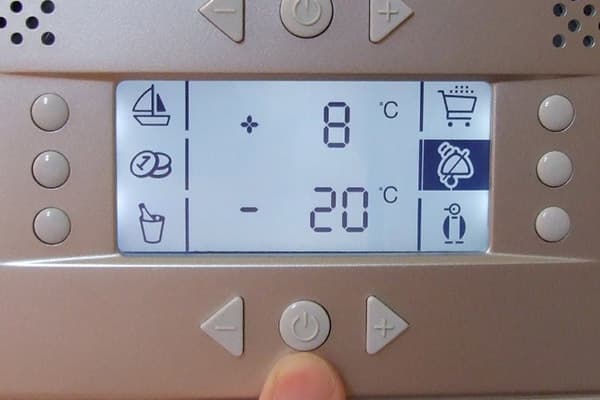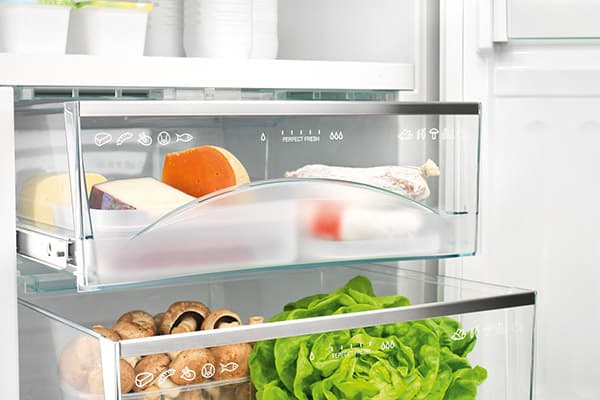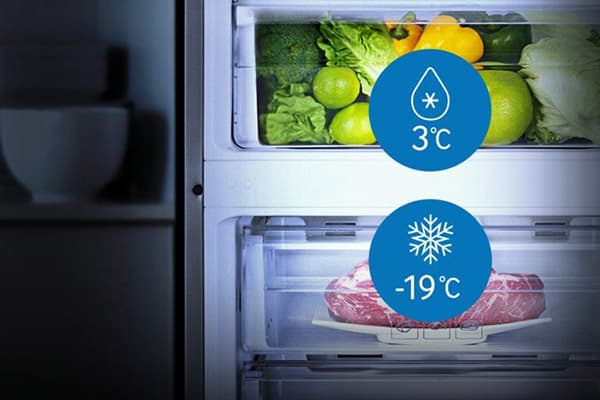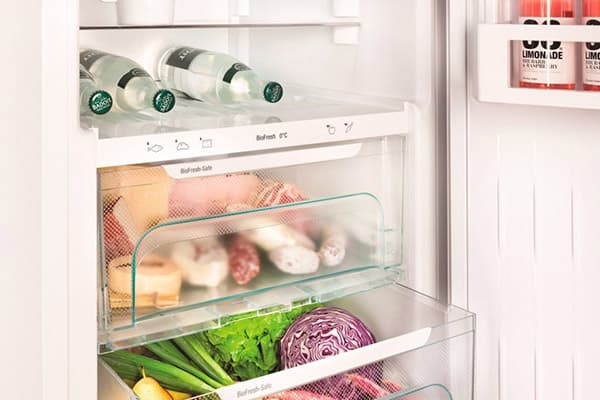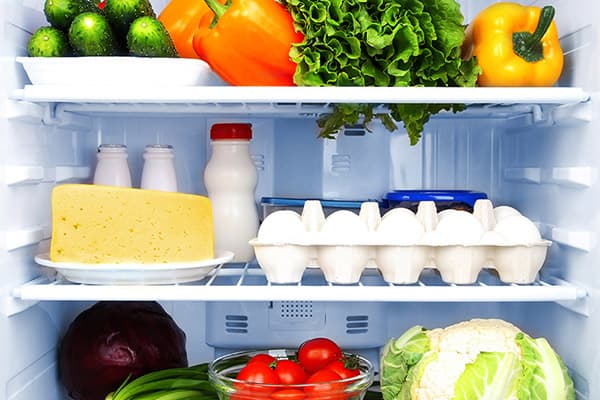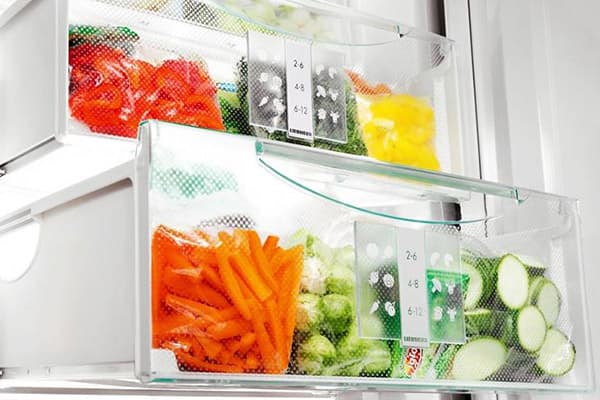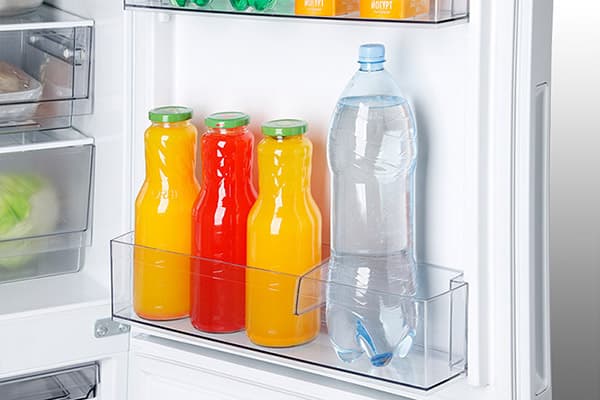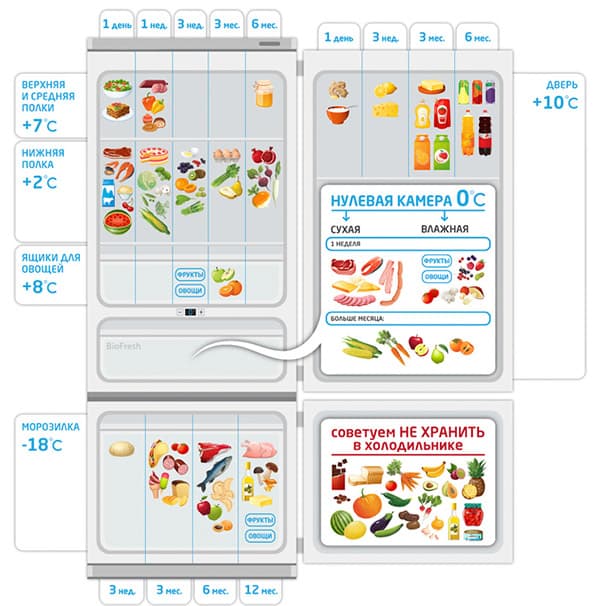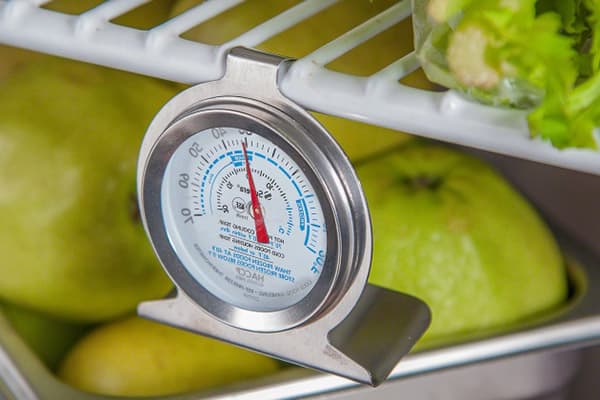Cold ideal: what temperature should be in the freezer and refrigerator?
Content:
So that the products during storage do not lose their qualities, it is important to understand what temperature should be in the refrigerator. It is believed that the "gold standard" is + 4 ° C in the main chamber and -18 ° C in the freezer. But different groups of products (meat and semi-finished products, dairy products, vegetables, fresh herbs, etc.) require specific temperature conditions. Let's find out how cold it should be in the summer and winter in the freezer, door compartments and on the shelves of the refrigerator.
Average and normal temperature
The question of temperatures is not as simple as it seems. The fact is that many factors influence the operation of a refrigeration unit. The most important are two of them:
- The temperature outside the refrigerator. It depends on the season, climatic features of the region in which the refrigerator is operated. The higher the outside temperature, the more heat gets into the chamber every time the door is opened.
- The degree of load of the refrigerator. If the supply volume is too large or small, the compressor load increases, and it becomes more difficult to maintain the optimum temperature.
If the refrigerator is empty, place several bottles of water on the shelves. This will facilitate the operation of the compressor, since water accumulates cold well.
The manufacturers' approach to determining the optimum temperature also varies. Thus, a major manufacturer of refrigeration equipment BOSCH indicates in the operating manual that the normal temperature in the main compartment is + 4 ° C, in the freezer - -18 ° C. Other manufacturers may use different methods of calculation and indicate different numbers.
The numbers indicated are the average temperature. It can be reached at optimum loading, and the door should not open for a long time. During this time, the temperature in all sections of the refrigerator compartment will equalize. But as soon as you open the door, a stream of warm air from the room will go inside the device, making the air in the part of the chamber closest to the room warmer.
Normal temperature is the value at which the products in the refrigerator do not deteriorate for as long as possible. Normal experts call the temperature in the range from + 2 °C to + 4 ° C.
Storage area depending on temperature
The warm air entering the refrigerator when the door is open changes the temperature in different zones differently. If you measure the temperature in the container for vegetables and on the top shelf, the indicators will differ. But this is not a sign of improper operation of the refrigerator. The uneven distribution of temperature allows you to select several storage areas in the refrigerator, each of which has its own unique microclimate.
By distributing products in the refrigerator, taking into account the peculiarities of storage areas, the following results can be achieved:
- The shelf life of each product will increase.
- Thanks to the optimal storage mode, the taste will remain unchanged for longer.
- Proper storage will preserve vitamins and other valuable nutrients.
But in order to achieve such results, you need to understand how the microclimate of each zone differs and for the storage of which products it is most suitable.
Freezer
The freezer, or freezer, is a zone with a minimum temperature.If the refrigerator is two-compartment, the freezer is located behind a separate door and is better insulated from the refrigerator compartment. With single-chamber refrigerators, it is possible to get food in the freezer only if you open the common door. This reduces the efficiency of the refrigerator and overloads the compressor.
Most manufacturers adjust the control equipment so that it can be between -12 ° C and -24 ° C in the freezer. In this case, the step from one control point to another is usually 6 ° C.
In this case, the modes have the following purpose:
- The operating standard with an average compressor load is a temperature mode of -18 ° C. At the same time, the products are quite well frozen.
- A temperature of -12 ° C saves energy, but less effectively ensures the safety of products. It can be turned on if the freezer load is small and in the average mode the products freeze.
- The maximum load (-24 ° C) is advisable when you need to quickly freeze loaded foods. This mode is switched on for a short time and after 2-3 hours the refrigeration unit is returned to standard mode.
Modern refrigerators equipped with an electronic control unit usually have a “Quick Freeze” program. When it is turned on, the control unit itself will cool the freezer to -30 ° C, and then after 120 minutes it will return the compressor to normal mode. Quick freezing ensures maximum preservation of vitamins in berries, vegetables, herbs.
Freshness zone
This compartment in the refrigerator is intended for cheeses, greens, boiled fish, cakes, etc. The closed compartment creates a unique microclimate, which is characterized by high humidity at a temperature of + 3 ° C.
The freshness zone is marked differently in refrigerators from different manufacturers. The most common designations are Opti Fresh Zone, BioFresh Zone, Cool Select Zone.
The fresh zone should not be confused with the zero zone. This compartment (not all models have it) is designed to store chilled meat, poultry, seafood, fish. The temperature in it does not rise above + 2 ° C and does not fall below 0 ° C.
If there is no compartment for the zero zone in your refrigerator, the conditions as close to it as possible are observed on the top shelf of the refrigerator. Here, the products fall into the cold coming from the freezer (provided that the freezer is installed in the upper part of the refrigeration unit).
Medium shelves
The temperature on the middle shelves is highly dependent on how often the refrigerator door opens. The temperature range characteristic of this storage area is from + 3 ° C to + 5 ° C. This mode is optimal for storing soup in a saucepan, cooked cereals and other main dishes, eggs, salads, groceries, dairy products, soda, and other soft drinks.
Ready meals should not be put in the refrigerator before they cool to room temperature. Hot foods greatly increase the temperature in the chamber, which creates a huge load on the compressor.
Containers for fruits and vegetables
Containers for vegetables are usually located at the maximum distance from the freezer. For storage of root crops (potatoes, beets, carrots) and fruits (apples, pears), a temperature in the range from + 3 ° C to + 6 ° C is optimal. It is not advisable that the temperature in the containers drop to 0 ° C or lower, as this will lead to freezing of the products.
Particular care must be taken to maintain cleanliness in vegetable containers and the freshness area. High humidity and relatively high temperature are the most favorable environment for the development of molds.
Exotic fruits (bananas, pineapples, passion fruit) should not be stored in the refrigerator. Due to the fact that these fruits grew in hot climates, exposure to low temperatures leads to rapid spoilage of delicate tropical fruits.
Shelves on the door
This storage area is the warmest. When you open the door, the shelves are outside the refrigerator compartment, so the temperature here is 1-2 degrees higher than average.Store on these shelves a container with butter, eggs, sauces (ketchup, mayonnaise, mustard), soft drinks, medicines (candles, eye drops, injectable solutions).
Product Storage Table
To make the presented information easier to perceive, we have prepared a table reflecting the optimum temperatures for storing food in a domestic refrigerator.
| Product Category | Storage time | Optimum temperature |
|---|---|---|
| Raw Chilled Meat | 1.5–2 days | from + 1 ° C to + 3 ° C |
| Fresh chilled fish | up to 2 days | from 0 ° C to + 2 ° C |
| Raw eggs | up to 28 days | from + 2 ° C to + 5 ° C |
| Soups, main dishes | no more than 5 days | from + 2 ° C to + 5 ° C |
| Milk and Dairy Products | according to the expiration date indicated on the package | + 4 ° C |
| Bakery products | no more than 72 hours | + 5 ° C |
| Cakes, pastries | no more than 72 hours | from + 1 ° C to + 3 ° C |
| Vegetables and greens | from 5 days to 1 month | from + 4 ° C to + 7 ° C |
| Fresh berries | no more than 2 days | from + 2 ° C to + 4 ° C |
| Fruit (except exotic) | no more than 7 days | from + 2 ° C to + 6 ° C |
To avoid food poisoning, regularly check the contents of the refrigerator and discard spoiled foods. Regrets about moldy bread or rancid butter go much faster than an upset stomach.
Spoiled products that can be processed (for example, sour milk) should be processed as soon as possible. Otherwise, they will become a breeding ground for the development of bacteria and molds. These microorganisms can not only spread to products not yet spoiled, but also become a source of unpleasant odors, which will be very difficult to get rid of.
We also give a table with optimal temperatures for commercial units operating in retail outlets:
| Purpose of the refrigerator or display case | Storage time | Optimum temperature |
|---|---|---|
| Frozen Meat Storage | 1-2 weeks per pack, 4-11 days unpacked | from -25 ° C to -12 ° C |
| Storage of products in the sausage department | 10-30 days, depending on the variety | from 0 ° C to + 6 ° C |
| Storage and sale of soft ice cream | No more than 1 week | from -22 ° C to -5 ° C |
| Storage and sale of hard ice cream | No more than 6 months | from -22 ° C to -12 ° C |
| Storage and sale of cheeses | 5 to 15 days, depending on the variety | from + 2 ° C to + 10 ° C |
| Flower storage | 1 to 4 weeks, depending on type | from + 4 ° C to + 6 ° C |
Useful Tips
The refrigerator, like any other household appliances, requires knowledge of the rules of its operation and care. Read the instructions carefully before using the refrigeration unit for the first time. This will help not only to understand how to properly defrost a freezer, but also to choose the optimal temperature conditions.
Defrost the refrigerator in a timely manner. The ice that has grown on the walls of the freezer interferes with the heat exchange between the air in the chamber and the freon in the tubes. Defrosting allows you to extend the life of the compressor and significantly reduces energy consumption.
Pack bags and plastic bags for food storage. They will not allow food to absorb odors. In addition, if a product begins to deteriorate, bacteria and mold cannot spread throughout the chamber.
If you need to take a temperature measurement, take a working thermometer, put it on a dry plate and place it in the center of the container or shelf on which you plan to measure the temperature. You can check the thermometer after 10 minutes from the moment the door was last opened.
Following our recommendations will allow you to extend the life of your refrigerator, preserve the taste and freshness of purchased products. This result is worth the effort, isn't it?
